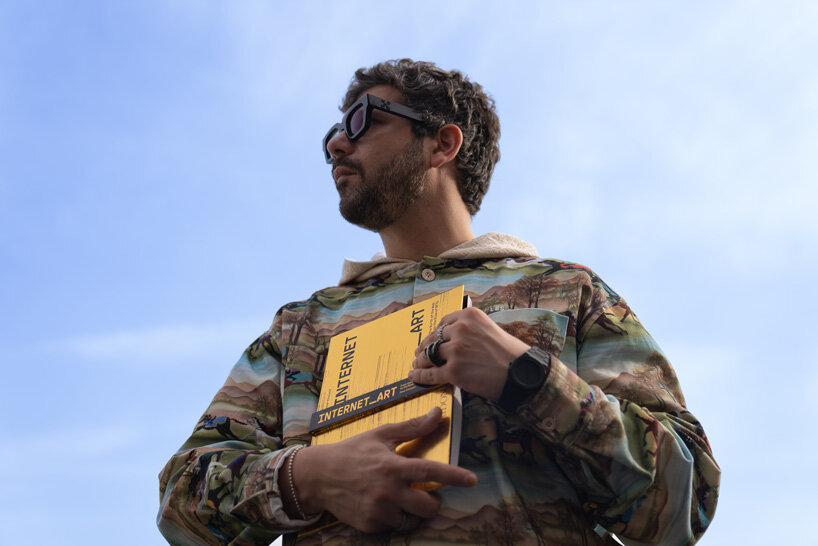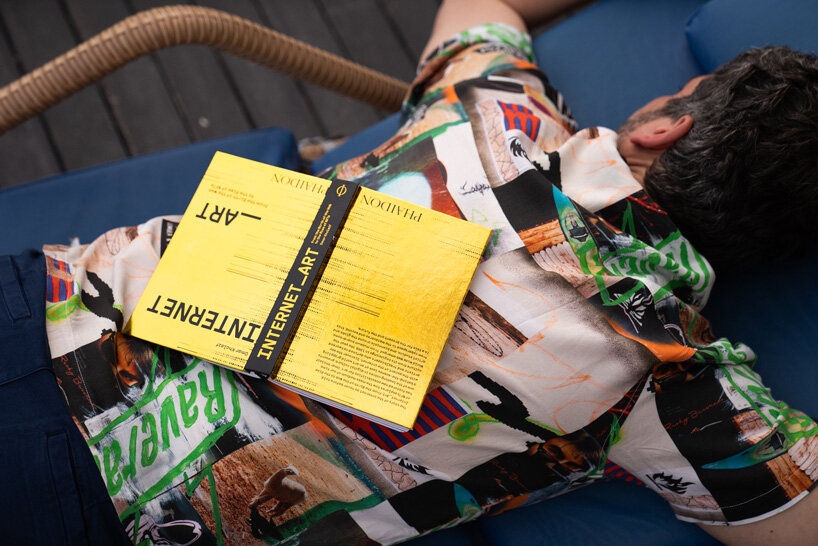omar kholeif on the development of internet art at NFT KUNSTDAGEN ZRH
the development of digital art and culture in the internet age
Last weekend, second edition of NFT ART FAIR ZRH brought together leading thinkers and practitioners in the digital art world to discuss the transformative potential of blockchain technology and its impact on the art world. From panels on navigating fundraising and ownership in crypto art the landscape of the relationship between the various traditional and digital creative realms, the development of new technologies and new means of exploration was a core theme. Among the participants, Dr. Omar Kholeif, an influential figure in the field and author of Internet_Art: From the Birth of the Web to the Rise of NFTs, delved into notions of democratization, justice, and the application of new tools like the blockchain, NFTs, and AI for their keynote address. The author explored the prospects of social justice for both art and artists on the blockchain and explored the untapped potential of these technologies to reshape the present and the future. “I’m optimistic that if we work together and coordinate, as a community, we can potentially see seismic shifts impacting digital native art more broadly, and not purely in a tokenistic way,” they told designboom in our interview.
Acknowledging the profound impact of technology on our lives as the two continue to become increasingly intertwined, Kholeif has assembled a comprehensive survey of the evolution of digital culture in the age of the Internet—from the conception of the World Wide Web in 1989 to augmented virtual reality to the blockchain-powered metaverse – and its relationship to art. ‘I wanted to reveal how a whole ocular sensibility has been generated in the internet age – one that affects the ocular conditions through which any form of culture is created and conditioned.’
As the media partner of NFT ART DAY ZRH, we caught up with Omar Kholeif to get a deeper insight behind his book, his views on NFT’s impact on the growth and recognition of internet art, its impact on the traditional art realm and the democratization of art. Read on for the full interview below, and see more of our coverage here.

all images courtesy of artPost21 | header image: Orbital Reflector by Trevor Paglen, courtesy of Phaidon Press
interview with omar kholeif at nft art day zrh
designboom (DB): Can you tell us about the topics your keynote at NFT ART DAY ZRH touched on?
Omar Kholeif (OK): I explored the prospect and concept of social justice for art and artists on the blockchain by discussing the expansive possibilities of these technologies; and to consider how they have not yet been distributed across the field.
DB: Can you elaborate on the core themes and concepts explored in your new book Internet_Art? What motivated you to explore these?
OK: The book has the title Internet_Art: From the Birth of the Web to the Rise of NFTs and the “underline” is central as it shapes the way the book is structured. I have spent two decades writing, researching and curating digital culture. Rather than presenting a generic anthology that compiles a small list of names, I wanted to reveal how an entire ocular sensibility has been generated in the age of the internet – one that affects the ocular conditions through which any form of culture is created and conditioned. . I chose to focus on my own lived experience, as this reflects the internet’s capacity to create space for marginalized voices. What I do is to tell both a memoir and a social history about the central currents that have emphasized the culture from 1989 to the present day. It was a huge undertaking that took three years to put out into the world, and it’s one of my proudest achievements so far. I hope that it will encourage others to tell their stories – as there are none one history, ever!

in conversation with Omar Kholeif on their book Internet_Art at NFT KUNSTDAGEN ZRH
DB: The rise of NFTs has seen a wave of interest around digital art. How do you think NFTs have affected the growth and recognition of internet art and how have they reshaped the art market?
OK: I have to be honest that I don’t yet believe that NFTs have yet reshaped the art market. The market is just catching up and understanding what NFT is, what the blockchain is, and what opportunities they can create for us as a society. I certainly hope that something will change. But right now we’re still in the early stages of a post-speculation bubble, and we’re about to take a look inward to reflect and see what we can do with both our present and our future. That’s why I came to NFT ART DAY ZRH. I have chosen, up to this point, to be completely silent on the subject of NFT. In fact, I’m optimistic that if we collaborate and coordinate, as a community, we could potentially see seismic shifts impacting digital native art more broadly, and not purely in a tokenistic way. I am, and always have been, a digital centrist with a slight preference for being an optimist!

Internet_Art charts the evolution of digital culture from the conception of the World Wide Web to the metaverse
DB: How has the traditional art world coped with the transformative influence of the digital realm over the last 30 years? Has its growth opened up any important avenues or challenges for both institutions and creators?
OK: Where should I start? What challenges have they not faced? Traditional museums, large galleries and even auction houses often move at a snail’s pace. They find anything which deviates from their branding to be a painstaking process to have to negotiate. That is why I founded the agency in 2012, artPost21, as a means of marking a 21st century culture that is responsive and responsive with immediacy. I have been particularly concerned with cultural actors and cultural forms that exist on the fringes of society. Those people whose voices require amplification. artPost21 acts as an agent for artists – a consulting firm, a commissioning platform, a podcast and an incubator to test out these ideas.


